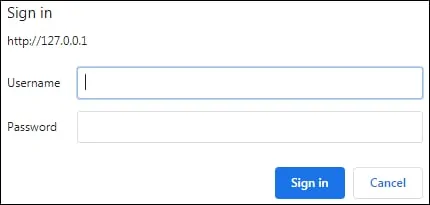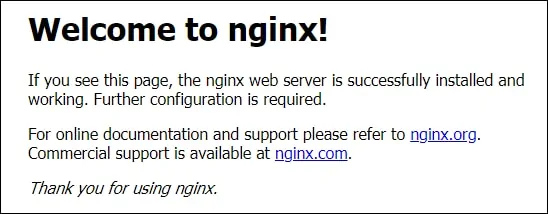Would you like to learn how to configure an Nginx server to use RADIUS authentication? In this tutorial, we are going to show you how to authenticate the Nginx service using a Freeradius server installed on a computer running Ubuntu Linux.
• Ubuntu 20
• Ubuntu 19
• Ubuntu 18
• Nginx 1.18.0
Equipment list
The following section presents the list of equipment used to create this tutorial.
As an Amazon Associate, I earn from qualifying purchases.
Nginx - Related Tutorial:
On this page, we offer quick access to a list of tutorials related to Nginx.
Tutorial - FreeRadius Server Installation on Ubuntu Linux
• IP - 192.168.15.10
• Operacional System - Ubuntu 20.04
• Hostname - FREERADIUS
On the Linux console, use the following commands to install the FreeRadius service.
Now, we need to add FreeRadius clients to the file named: Clients.conf.
Locate and edit this file.
Add the following lines at the end of the clients.conf file.
In our example, we are adding 1 client device:
The device was named PROXYAUTH and has the IP address 192.168.15.30.
Now, we need to add FreeRadius users to the configuration file named: USERS.
Locate and edit this file.
Add the following lines at the end of the file
In our example, we are adding 2 user accounts.
The first user account was named Admin.
The second user account was named Bruno.
Restart the Freeradius server.
Test your radius server configuration file.
You have finished the Freeradius installation on Ubuntu Linux.
Freeradius Authentication Test
Test your radius authentication locally using the following commands:
Here is the command output:
As you can see, the Bruno Account was able to successfully authenticate on the Radius server.
Test the user account named Admin.
Here is the command output:
As you can see, the Admin Account was able to successfully authenticate on the Radius server.
Tutorial Nginx - RADIUS authentication
• IP - 192.168.15.20
• Operational System - Ubuntu 20.04
• Hostname - NGINX
Install the Nginx server.
Edit the Nginx configuration file for the default website.
Here is the file before our configuration.
Here is the file after our configuration.
In our example, the Nginx configuration requires user authentication to access any part of the website.
Nginx does not have native RADIUS authentication.
The authentication information sent to Nginx will be forwarded to the web server 192.168.15.30.
If the remote server validates the user authentication, Nginx will authorize the user access.
Restart the Nginx service.
You have finished the Nginx required configuration.
Nginx - Using Apache as the authentication proxy
• IP - 192.168.15.30
• Operational System - Ubuntu 20.04
• Hostname - APACHE
Now, we need to configure the remote server that will be responsible for the credential validation.
In our example, we are going to use an Apache server to validate the user credential on the RADIUS server.
Install the Apache server and the required RADIUS authentication module.
Enable the Apache2 RADIUS authentication module.
Create a directory named AUTH and give the user named www-data permission over this directory.
Configure the Apache server to request the RADIUS authentication to users trying to access this directory.
Edit the Apache configuration file for the default website.
Here is the configuration file before our configuration.
Here is the file after our configuration.
The Apache server was configured to request password authentication to access the directory named AUTH.
The Apache web server was configured to authenticate user accounts using the RADIUS server 192.168.15.10.
Restart the Apache service.
Congratulations! You successfully configured the Apache authentication.
Nginx - RADIUS authentication test
Open your browser and enter the IP address of your Nginx web server.
In our example, the following URL was entered in the Browser:
• http://192.168.15.20
The Nginx server will require you to perform the user authentication.

After a successful login, you will be authorized to access the website.

Congratulations! You configured the RADIUS authentication on the Nginx server.
